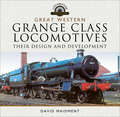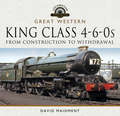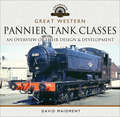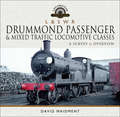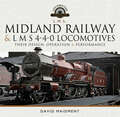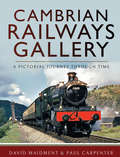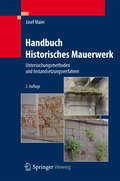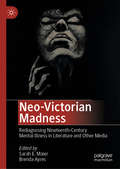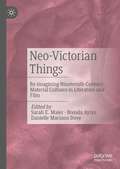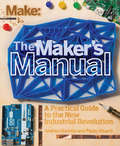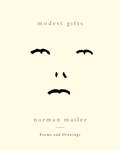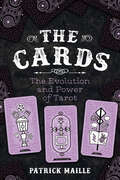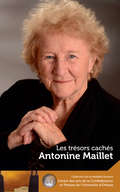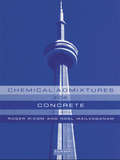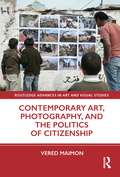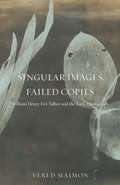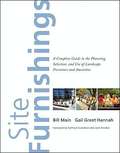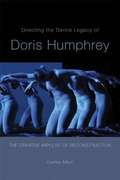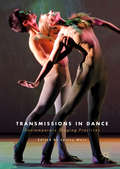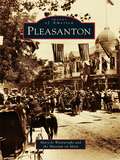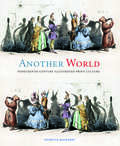- Table View
- List View
Great Western, Grange Class Locomotives: Their Design and Development (Locomotive Portfolios)
by David MaidmentThe renowned British railroad historian delivers &“a well-illustrated account of the rationale behind Collett&’s construction of this 80 strong class&” (West Somerset Railway Association). English railway engineer George Jackson Churchward proposed a 5ft 8in wheeled 4-6-0 for mixed traffic duties in 1901 and it was seriously considered in 1905, but it took until 1936 before his successor, Charles Collett, realized the plan by persuading the GWR Board to replace many of the 43XX moguls with modern standard mixed traffic engines that bore a remarkable likeness to the Churchward proposal. David Maidment has written another in his series of &“Locomotive Portfolios&” for Pen & Sword to coincide with the construction of a new &“Grange&” at Llangollen from GW standard parts to fill the gap left by the total withdrawal and scrapping of one of that railway&’s most popular classes—to their crews at the very least. As well as covering the type&’s design and construction, the author deals comprehensively with the allocation and operation of the eighty locomotives and in particular has researched their performance and illustrated it with many examples of recorded logs from the 1930s as well as in more recent times. As in previous volumes, the author has added his own personal experiences with the engines and has sourced more than 250 photos, over 40 of which are in color. &“Superbly researched . . . another extraordinary and unreservedly recommended addition to . . . British Railroading History collections.&” —Midwest Book Review &“Granges worked off-region quite widely, so this is not just a book for the copper-capped chimney brigade; enthusiasts for whom these capable machines are favorites will definitely want this volume on the bookshelf.&” —Railway Modeller
Great Western, King Class 4-6-0s: From Construction to Withdrawal (Locomotive Portfolios)
by David MaidmentAn in-depth look at the British railway company’s celebrated class of steam locomotives, with more than three hundred photos.Built by Collett in 1927 after pressure to restore the Great Western Railway’s pre-eminence in motive power and cope with increasing postwar traffic to Devon and Cornwall holiday resorts, the thirty Kings were the final development of the Churchward Stars and the 1923 Castles and remained on top-link main line duty until their final replacement by the ‘Western’ class 52 diesel hydraulics in 1962. This book includes an insight into the thinking of some of Collett’s senior staff at the end of the 1930s and the eventual transformation in the latter years with redraughting and double chimneys. As well as describing their design and construction, the book comprehensively covers their operation and performance, backed up by many recorded logs on all main GW/WR routes over which they were permitted. The author had close experience of the class when working at Old Oak Common between 1957 and 1962, and includes a chapter of his experiences with them, including many footplate trips (as a management trainee, he was greeted with glee by firemen who would hand him the shovel). The book also includes over 300 photographs, one hundred of them in color.
Great Western Pannier Tank Classes: An Overview of Their Design & Development (Locomotive Portfolios)
by David MaidmentThis comprehensive and fully illustrated history presents an in-depth look at the Great Western Railway&’s various pannier tank engines. Though hauling freight was a vital part of Great Western Railway&’s history—and where it made the majority of its profit—there are few books devoted to the stout, powerful engines that did the work. In Great Western, Pannier Tank Classes, British Railways expert David Maidment corrects that oversight. This volume explores the large number of 0-6-0 saddle tanks built for both the Great Western Railway and the independent railway companies in South Wales, most of which were converted to pannier tanks in the Churchward and Collett eras. While covering the Armstrong and Dean engines in detail, Maidment goes on to describe the design, construction and operation of the largest class of steam engines built in the UK in the last century: Charles Collett&’s GWR 5700 class, examples of which were still being built after nationalization. Collett also designed pannier tank engines for branch passenger and freight work, and his successor Frederick Hawksworth continued the GW tradition with a tapered boiler version. All of these are discussed in depth in terms of their design and service. A concluding chapter covers further designs that were never built.
Great Western Pannier Tank Classes: An Overview of Their Design & Development (Locomotive Portfolios)
by David MaidmentThis comprehensive and fully illustrated history presents an in-depth look at the Great Western Railway&’s various pannier tank engines. Though hauling freight was a vital part of Great Western Railway&’s history—and where it made the majority of its profit—there are few books devoted to the stout, powerful engines that did the work. In Great Western, Pannier Tank Classes, British Railways expert David Maidment corrects that oversight. This volume explores the large number of 0-6-0 saddle tanks built for both the Great Western Railway and the independent railway companies in South Wales, most of which were converted to pannier tanks in the Churchward and Collett eras. While covering the Armstrong and Dean engines in detail, Maidment goes on to describe the design, construction and operation of the largest class of steam engines built in the UK in the last century: Charles Collett&’s GWR 5700 class, examples of which were still being built after nationalization. Collett also designed pannier tank engines for branch passenger and freight work, and his successor Frederick Hawksworth continued the GW tradition with a tapered boiler version. All of these are discussed in depth in terms of their design and service. A concluding chapter covers further designs that were never built.
L & S W R Drummond Passenger & Mixed Traffic Locomotive Classes: A Survey & Overview (Locomotive Portfolios)
by David MaidmentA detailed look at the nineteenth-century steam locomotive engineer and the ups and downs of his career, with numerous photos throughout.Born in Scotland in 1840, Dugald Drummond had a long career in locomotive and railway engineering, including prominent positions on the Highland; London Brighton & South Coast Railway, North British, and Caledonian Railways, before arriving on the London & South Western Railway in the mid-1890s. There he replaced his mild-mannered and better-liked predecessor, William Adams.His locomotives were a mix: His 4-4-0 tender and 0-4-4 tank classes were very good, but his 4-6-0 tender locomotives proved a disappointment, with the exception of the T14 class, which lasted in service until 1951. Many of his 4-4-0 tender and 0-4-4 tank locomotives, the T9 and M7 classes, lasted until the early 1960s on British Railways. As a result of his stubborn nature, Drummond died in 1912 after an accident that scalded his feet, having refused to get proper treatment. But much of his work lived on for decades, and examples are preserved today in the National Collection and on the Swanage Railway.
Midland Railway and L M S 4-4-0 Locomotives: Their Design, Operation and Performance
by David MaidmentDavid Maidment has unravelled the complex history of the Johnson, Deeley and Fowler 4-4-0 locomotives of the Midland Railway and its LMS successor, covering their design, construction, operation and performance in this book with over 400 black and white photographs. It recounts their working on the Midland main lines from St Pancras to Derby, Manchester, Leeds and Carlisle, the latter via the celebrated Settle & Carlisle line, and the later work of the Fowler LMS engines on the West Coast main line. The book also describes the history of the Midland 4-4-0s built for the Somerset & Dorset and Midland & Great Northern Railways. The book covers the period from the first Midland 4-4-0 built in 1876 to the last LMS 2P withdrawn in 1962 and includes performance logs, weight diagrams and dimensions and statistical details of each locomotive.
Cambrian Railways Gallery: A Pictorial Journey Through Time
by David Maidment Paul CarpenterThe historic trainline connecting Shropshire, England, to the West Coast of Wales is beautifully captured in this volume of photographs.One of the most scenic trainlines in the United Kingdom, the Cambrian Line carries passengers through mountains and market towns, offering views of castles, countryside, and World Heritage sites as it makes its way to the breathtaking Welsh coast. This volume offers a brief history of the Cambrian Railways&’ early years, followed by a magnificent and comprehensive set of early photographs of Cambrian engines, Oswestry Works, and sumptuous Welsh scenery. The book is written by British Railways expert David Maidment together with Paul Carpenter, who brings the story of the Cambrian up to date. Carpenter also invites a number of former railwaymen who to share their memories of working on the Cambrian system. The book also covers the efforts of Cambrian Heritage Railways to restore part of the closed section of the line.
Cambrian Railways Gallery: A Pictorial Journey Through Time
by David Maidment Paul CarpenterThe historic trainline connecting Shropshire, England, to the West Coast of Wales is beautifully captured in this volume of photographs.One of the most scenic trainlines in the United Kingdom, the Cambrian Line carries passengers through mountains and market towns, offering views of castles, countryside, and World Heritage sites as it makes its way to the breathtaking Welsh coast. This volume offers a brief history of the Cambrian Railways&’ early years, followed by a magnificent and comprehensive set of early photographs of Cambrian engines, Oswestry Works, and sumptuous Welsh scenery. The book is written by British Railways expert David Maidment together with Paul Carpenter, who brings the story of the Cambrian up to date. Carpenter also invites a number of former railwaymen who to share their memories of working on the Cambrian system. The book also covers the efforts of Cambrian Heritage Railways to restore part of the closed section of the line.
Handbuch Historisches Mauerwerk
by Josef MaierDas Buch bietet einen umfassenden Überblick zu Schäden am historischen Mauerwerk: nicht nur Feuchtigkeits- und Salzschäden, sondern auch Schäden durch Risse und lose Füllschichten. Der Autor liefert wertvolle Tipps zur Erkennung der Schadensursachen sowie Anleitungen für zerstörungsarme Untersuchungen und für die Instandsetzung. In die 2. Auflage wurden neue technische Möglichkeiten zur Instandsetzung von historischem Mauerwerk aufgenommen, aktuelle Normen und Regelwerke sowie neue Anforderungen zum Schall- und Wärmeschutz wurden berücksichtigt.
Neo-Victorian Madness: Rediagnosing Nineteenth-Century Mental Illness in Literature and Other Media
by Sarah E. Maier Brenda AyresNeo-Victorian Madness: Rediagnosing Nineteenth-Century Mental Illness in Literature and Other Media investigates contemporary fiction, cinema and television shows set in the Victorian period that depict mad murderers, lunatic doctors, social dis/ease and madhouses as if many Victorians were “mad.” Such portraits demand a “rediagnosing” of mental illness that was often reduced to only female hysteria or a general malaise in nineteenth-century renditions. This collection of essays explores questions of neo-Victorian representations of moral insanity, mental illness, disturbed psyches or non-normative imaginings as well as considers the important issues of legal righteousness, social responsibility or methods of restraint and corrupt incarcerations. The chapters investigate the self-conscious re-visions, legacies and lessons of nineteenth-century discourses of madness and/or those persons presumed mad rediagnosed by present-day (neo-Victorian) representations informed by post-nineteenth-century psychological insights.
Neo-Victorian Things: Re-imagining Nineteenth-Century Material Cultures in Literature and Film
by Sarah E. Maier Brenda Ayres Danielle Mariann DoveNeo-Victorian Things: Re-Imagining Nineteenth-Century Material Cultures in Literature and Film is the first volume to focus solely on the replication, reconstruction, and re-presentation of Victorian things. It investigates the role of materiality in contemporary returns to the past as a means of assessing the function of things in remembering, revisioning, and/or reimagining the nineteenth century. Examining iterations of material culture in literature, film and popular television series, this volume offers a reconsideration of nineteenth-century things and the neo-Victorian cultural forms that they have inspired, animated, and even haunted. By turning to new and relatively underexplored strands of neo-Victorian materiality—including opium paraphernalia, slave ships, clothing, and biographical objects—and interrogating the critical role such objects play in reconstructing the past, this volume offers ways of thinking about how mis/apprehensions of material culture in the nineteenth century continue to shape our present understanding of things.
The Maker's Manual
by Andrea Maietta Paolo Aliverti Patrick Di JustoThe Maker's Manual is a practical and comprehensive guide to becoming a hero of the new industrial revolution. It features dozens of color images, techniques to transform your ideas into physical projects, and must-have skills like electronics prototyping, 3d printing, and programming. This book's clear, precise explanations will help you unleash your creativity, make successful projects, and work toward a sustainable maker business. Written by the founders of Frankenstein Garage, which has organized courses since 2011 to help makers to realize their creations, The Maker's Manual answers your questions about the Maker Movement that is revolutionizing the way we design and produce things.
Modest Gifts
by Norman MailerAn unexpected collection from Norman Mailer--a book of his selected poems and more than one hundred of his drawings, most of them never before published. Modest Gifts is full of what the author calls "casual pleasures"--witty, naughty, and surprisingly tender verse and art. Lust, seduction, betrayal, jealousy, and even the banality of cocktail party chatter are depicted with humor, affection, and, above all, honesty. Here is an aspect of Norman Mailer unknown to many: lighthearted, prankish, whimsical, and often gentle, playfully sketching the intimate urban world that surrounds us. Modest, funny, and true, each poem and drawing shows a new side of one of the greatest writers of our time.
The Cards: The Evolution and Power of Tarot
by Patrick MailleTarot cards have been around since the Renaissance and have become increasingly popular in recent years, often due to their prevalence in popular culture. While Tarot means many different things to many different people, the cards somehow strike universal chords that can resonate through popular culture in the contexts of art, television, movies, even comic books. The symbolism within the cards, and the cards as symbols themselves, make Tarot an excellent device for the media of popular culture in numerous ways. They make horror movies scarier. They make paintings more provocative. They provide illustrative structure to comics and can establish the traits of television characters. The Cards: The Evolution and Power of Tarot begins with an extensive review of the history of Tarot from its roots as a game to its supposed connection to ancient Egyptian magic, through its place in secret societies, and to its current use in meditation and psychology. This section ends with an examination of the people who make up today’s tarot community. Then, specific areas of popular culture—art, television, movies, and comics—are each given a chapter in which to survey the use of Tarot. In this section, author Patrick Maille analyzes such works as Deadpool, Books of Magic by Neil Gaiman, Disney's Haunted Mansion, Sherlock Holmes: Game of Shadows, The Andy Griffith Show, Buffy the Vampire Slayer, and King of the Hill. The cards are evocative images in their own right, but the mystical fascination they inspire makes them a fantastic tool to be used in our favorite shows and stories.
Antonine Maillet: Les trésors cachés - Our Hidden Treasures (The Symons Medal Series/Collection de la Médaille Symons)
by Antonine MailletA veritable artist, Maillet becomes a “creator of sounds, of colours, of forms and words.” As she speaks, she paints a vast landscape of mountains and oceans, history and story, using the tools on her palette: blending the colours of myths and those of contemporary issues, creating an epic poem in a profoundly personal voice. This country she portrays is both young and old, speaks two languages, has a rich subconscious, and aspirations. She ends her lecture by re-telling a story originally written by Rabelais— which, incidentally, was penned the same year as the discovery of America. The grande dame of storytelling uses her art to make an appeal for solidarity, in favour of the protection of cultures and the preservation of languages. Will her country, she asks, the one made “of many faces” and paradoxes, “be able to give nations of diverse origins their rightful place?” Renowned, notably, for her iconic play La Sagouine, Antonine Maillet received the prestigious Prix Goncourt for her novel Pélagie-la-Charette, thereby becoming the first non-European laureate of the most prestigious award in France. Since then, she has published over twenty novels and many plays, and also translated several celebrated authors such as Shakespeare. She is the recipient of numerous literary awards, including the Governor General Literary Award, the Royal Society of Canada’s Lorne Pierce Medal, and the Prix Goncourt. This book is bilingual.
The Mystic Warriors of the Plains: The Culture, Arts, Crafts and Religion of the Plains Indians
by Thomas E. MailsThe mystic warriors of the plains is an indepth look at the history, customs, religeon, art work and dress of the American plains Indians. A look at the tribes that developed a civilization that rivals any of the ancient civilizations of the world.
Chemical Admixtures for Concrete
by Noel P. Mailvaganam M.R. Rixom Daniel P. Manson Carol GonzalesChemical admixtures are used in concrete mixtures to produce particular engineering properties such as rapid hardening, water-proofing or resistance to cold. Chemical Admixtures for Concrete surveys recent developments in admixture technology, explaining the mechanisms by which admixtures produce their effects, the various types of admixtures avail
Contemporary Art, Photography, and the Politics of Citizenship (Routledge Advances in Art and Visual Studies)
by Vered MaimonThis book analyzes recent artistic and activist projects in order to conceptualize the new roles and goals of a critical theory and practice of art and photography. Vered Maimon argues that current artistic and activist practices are no longer concerned with the “politics of representation” and the critique of the spectacle, but with a “politics of rights” and the performative formation of shared yet highly contested public domains. The book thus offers a critical framework in which to rethink the artistic, the activist, and the political under globalization. The primary focus is on the ways contemporary artists and activists examine political citizenship as a paradox where subjects are struggling to acquire rights whose formulation rests on attributes they allegedly don't have; while the universal political validity of these rights presupposes precisely the abstraction of every form of difference, rights for all. The book will be of interest to scholars working in art history, contemporary art, photography theory, visual culture, cultural studies, critical theory, political theory, human rights, and activism.
Singular Images, Failed Copies: William Henry Fox Talbot and the Early Photograph
by Vered MaimonFocusing on early nineteenth-century England?and on the works and texts of the inventor of paper photography, William Henry Fox Talbot?Singular Images, Failed Copies historicizes the conceptualization of photography in that era as part of a major historical change.Treating photography not merely as a medium or a system of representation but also as an epistemology, Vered Maimon challenges today's prevalent association of the early photograph with the camera obscura. Instead, she points to material, formal, and conceptual differences between those two types of images by considering the philosophical and aesthetic premises linked with early photography. Through this analysis she argues that the emphasis in Talbot's accounts on the removal of the "artist's hand" in favor of "the pencil of nature" did not mark a shift from manual to "mechanical" and more accurate or "objective" systems of representation.In Singular Images, Failed Copies, Maimon shows that the perception of the photographic image in the 1830s and 1840s was in fact symptomatic of a crisis in the epistemological framework that had informed philosophical, scientific, and aesthetic thought for two centuries.
Site Furnishings
by Main Bill Hannah Gail GreetIntroducing the first all-in-one guide to site furniture principles, processes, and best practices Furniture matters-outdoors as well as in. Understanding the connections between site and site furniture enhances the creative opportunities for designers of outdoor spaces and increases their ability to influence the long-term success of the spaces they design. Site Furnishings comprehensively examines how to elevate the design of site furnishings to achieve programming goals. Intended for landscape architects, designers, and contractors, as well as urban planners and designers, civil engineers, and other professionals, this accessible resource explores the ways that furniture contributes to the quality of outdoor spaces, and provides conceptual tools, technical information, and examples of successful applications. Just as important, it provides an in-depth overview of the elements that comprise site furnishings and the critical issues that inform site furniture selection. Supported by case studies and an abundance of high-quality photographs, Site Furnishings introduces professionals from all fields involved in site design to: Best practices, with a look at how these approaches lead to functional, responsive, and supportable outdoor spaces A step-by-step process for developing a furniture plan A typology of places that encompasses a wide spectrum of outdoor spaces, including parks and plazas, streetscapes, retail malls, theme parks, and transit hubs Management's role in the success of public spaces, supported by a detailed case study of how site and furniture management is implemented at New York's Bryant Park Sustainability, including the major issues involved in making sustainable site choices, where to obtain information, and industry initiatives to promote them Technical information on materials, installation methods, maintenance, and functional requirements of street and site furniture
Directing the Dance Legacy of Doris Humphrey
by Lesley MainDirecting the Dance Legacy of Doris Humphreylooks inside four of Doris Humphrey’s major choreographic works-Water Study(1928),The Shakers(1931),With My Red Fires(1936), andPassacaglia(1938)-with an eye to how directorial strategies applied in recent contemporized stagings in the United States and Europe could work across the modern and contemporary dance genre. Author Lesley Main, a seasoned practitioner of Doris Humphrey choreography, stresses to the reader the need to balance respect for classical works from the modern dance repertory with the necessity for fresh directorial strategies, to balance between traditional practices and a creative role for the reconstructor. Drawing upon her own dance experience, Main’s book addresses an area of dance research and practice that is becoming increasingly pertinent as the dancer-choreographers of the 20th century modern and contemporary dance are no longer alive to attend to the re-stagings of the body of their works. Insightful and thought-provoking,Directing the Dance Legacy of Doris Humphreycalls for the creation of new forms of directorial practice in dance beyond reconstruction. The radical new practices it proposes to replace the old are sure to spark debate and fresh thinking across the dance field.
Transmissions in Dance
by Lesley MainThis book is a collection of essays that capture the artistic voices at play during a staging process. Situating familiar practices such as reimagining, reenactment and recreation alongside the related and often intersecting processes of transmission, translation and transformation, it features deep insights into selected dances from directors, performers, and close associates of choreographers. The breadth of practice on offer illustrates the capacity of dance as a medium to adapt successfully to diverse approaches and, further, that there is a growing appetite amongst audiences for seeing dances from the near and far past. This study spans a century, from Rudolf Laban's Dancing Drumstick (1913) to Robert Cohan's Sigh (2015), and examines works by Mary Wigman, Madge Atkinson (Natural Movement), Doris Humphrey, Martha Graham, Yvonne Rainer and Rosemary Butcher, an eclectic mix that crosses time and borders.
Pleasanton
by Museum On Main Mary-Jo WainwrightThe city of Pleasanton, located in the beautiful Amador-Livermore valley, was formed in 1867 when immigrants John Kottinger and Joshua Neal used land from their Californio wives' dowries and laid out a town. Kottinger named the city after Civil War general Alfred Pleasonton, but a postal clerical error changed the spelling to "Pleasanton" and the name stuck. The men secured Pleasanton's future by offering land to the Western Pacific Railroad for a railroad station and landing. Planning for future growth thus became a legacy that is still embraced by this modern city of 70,000 people. Today families and tourists are attracted to Pleasanton's historic downtown, where 19thcentury buildings still stand and people stroll among its many shops and restaurants.
Another World: Nineteenth-Century Illustrated Print Culture
by Patricia MainardiThe remarkable story of the stylistic, cultural, and technical innovations that drove the surge of comics, caricature, and other print media in 19th-century Europe Taking its title from the 1844 visionary graphic novel by J. J. Grandville, this groundbreaking book explores the invention of print media—including comics, caricature, the illustrated press, illustrated books, and popular prints—tracing their development as well as the aesthetic, political, technological, and cultural issues that shaped them. The explosion of imagery from the late 18th century to the beginning of the 20th exceeded the print production from all previous centuries combined, spurred the growth of the international art market, and encouraged the cross-fertilization of media, subjects, and styles. Patricia Mainardi examines scores of imaginative and innovative prints, focusing on highly experimental moments of discovery, when artists and publishers tested the limits of each new medium, creating visual languages that extend to the comics and graphic novels of today. Another World unearths a wealth of visual material, revealing a history of how our image-saturated world came into being, and situating the study of print culture firmly within the context of art history.
South African National Cinema (National Cinemas)
by Jacqueline MaingardSouth African National Cinema examines how cinema in South Africa represents national identities, particularly with regard to race. This significant and unique contribution establishes interrelationships between South African cinema and key points in South Africa’s history, showing how cinema figures in the making, entrenching and undoing of apartheid. This study spans the twentieth century and beyond through detailed analyses of selected films, beginning with De Voortrekkers (1916) through to Mapantsula (1988) and films produced post apartheid, including Drum (2004), Tsotsi (2005) and Zulu Love Letter (2004). Jacqueline Maingard discusses how cinema reproduced and constructed a white national identity, taking readers through cinema’s role in building white Afrikaner nationalism in the 1930s and 1940s. She then moves to examine film culture and modernity in the development of black audiences from the 1920s to the 1950s, especially in a group of films that includes Jim Comes to Joburg (1949) and Come Back, Africa (1959). Jacqueline Maingard also considers the effects of the apartheid state’s film subsidy system in the 1960s and 1970s and focuses on cinema against apartheid in the 1980s. She reflects upon shifting national cinema policies following the first democratic election in 1994 and how it became possible for the first time to imagine an inclusive national film culture. Illustrated throughout with excellent visual examples, this cinema history will be of value to film scholars and historians, as well as to practitioners in South Africa today.
